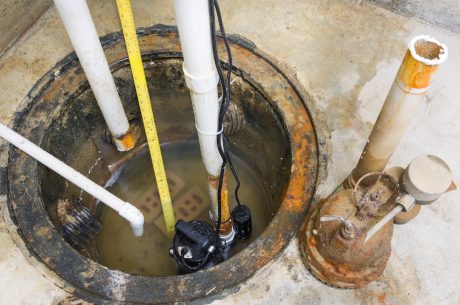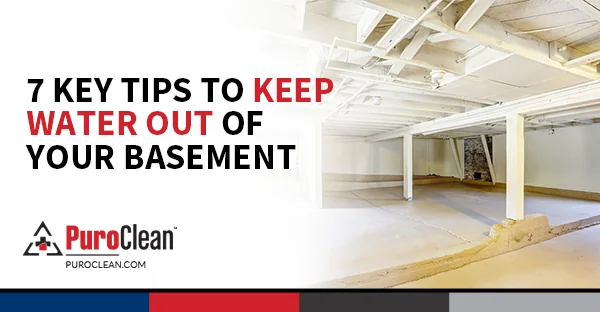Mold spores are literally everywhere and usually cause no concern. However, when mold grows indoors, exposure to it can cause various health problems and property damage. That’s why mold prevention should be a priority for any homeowner. But to understand mold prevention, we must first understand why it grows in the first place.
How mold grows in homes
Mold begins to grow when the conditions are right. It needs just three things to grow:
- Food — Anything that used to be alive (wood, cardboard, paper, wool, silk, leather, etc.).
- Temperature — Mold thrives in the range of 68°F to 86°F (the same range we typically keep our homes).
- Water — Very little is needed. In fact, the Environmental Protection Agency (EPA) says that indoor humidity above 60% is enough to allow mold to develop.
Since our generally warm homes normally contain a lot of potential mold “food”, all that is missing is water. And, unfortunately, water is the most likely cause of property damage in the country. It may come from overflowing sinks, leaking or broken pipes/hoses, drain or sewer back-ups, over-ground water from heavy rains or river/coastal flooding, and more. If the water contains any form of dirt, then the growth can occur even more quickly since dirt always includes organic material.
Mold often appears as “growth” or even discoloration on materials like paper or wood. Colors can range from white to orange, and from green to brown and black, and it gives off a musty smell.
The health effects of mold exposure
Exposure to indoor mold can cause various health problems. These range from minor irritations to allergic reactions, and even serious lung infections.
According to the Centers for Disease Control (CDC), The Institute of Medicine (IOM) linked indoor exposure to mold with upper respiratory tract symptoms, coughing, and wheezing in otherwise healthy people. The IOM also associated indoor mold exposure with respiratory illness in otherwise healthy children.
Furthermore, the CDC recommends that all indoor molds be eliminated. They added, “Generally, it is not necessary to identify the species of mold growing in a residence, and the CDC does not recommend routine sampling for molds.” Since all molds have the potential to cause allergic or allergic-like symptoms in people, especially sensitive individuals, you should eliminate them as soon as possible.
How to prevent mold in homes
There are many ways to help control moisture and prevent mold growth in your home. The basic rule is: if you can see or smell mold, eliminate the excess moisture, then clean and remove any mold. It’s very important to quickly identify and correct any moisture sources before health and structural problems develop.
Check out these mold prevention tips:
- Repair leaks in the walls, roof, gutters, and plumbing pipes quickly to reduce moisture. Inspect ceilings and walls for water stains.
- Keep indoor humidity at 30-50% by using a dehumidifier, air conditioner or by opening windows and doors. Check the humidity levels daily. Do NOT use fans if mold already exists. A fan will spread the mold spores.
- Prevent condensation in your home by reducing humidity, adjusting the thermostat, and insulating.
- Ventilate appliances that generate moisture (cooking stove, shower, dryer, etc.) using exhaust fans.
- Have your HVAC system inspected annually by a certified technician. Make sure your HVAC drip pans are clean and flow properly.
- After a flood, all wet areas in your home must be cleaned and dried within 48-72 hours by a water damage restoration expert.
- Prevent mold growth on indoor plant soil by adding a small quantity of Taheebo tea to the water you give to the plants.
- Use mold-resistant paint, drywall, and sheetrock to prevent moisture absorption in your walls.
- If you rebuild or remodel, use water-resistant building materials, such as tile, stone, deep-sealed concrete, waterproof wallboard, water-resistant glues, etc. In moisture-prone areas, consider easy-to-clean, water-resistant floor coverings, such as vinyl or stone tile.
- Slope the ground surrounding your home away from the house foundation to keep water at bay. Provide drainage to direct water away from your home.
- Clean your gutters and downspouts. Ensure water flow from downspouts is directed away from the foundation.
- Ventilate any crawl space as much as possible to allow for thorough drying.
For mold removal services, call PuroClean!
Follow these mold prevention tips to avoid this nasty fungus in your property. But if you discover mold in your home, the first step is to find and eliminate the water source then call a professional mold remediation company, such as PuroClean. Our certified, professional technicians understand and apply industry standard approaches to remediate mold completely.
Regardless of the circumstances — dealing with mold, water damage, fire/smoke damage, or biohazard remediation — call your local PuroClean office, the Paramedics of Property Damage®. For all property damage situations, our professionals are standing by. We will mitigate the loss to prevent further damage and will then provide restoration services to return the property to a pre-loss condition as quickly as possible.




 PuroClean of Meadow Woods
PuroClean of Meadow Woods